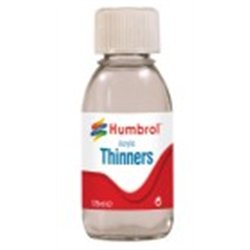Metal Medium is an acrylic paint by Vallejo that can be mixed with other acrylic paints to give them a metallic...
Cart 0 Product Products (empty)
No products
Free shipping! Shipping
£ 0.00 Total
Product successfully added to your shopping cart
Quantity
Total
There are 0 items in your cart. There is 1 item in your cart.
Total products (tax incl.)
Total shipping (tax excl.) Free shipping!
Total (tax incl.)
Search Tips
Is paint for airbrushing different from normal paint?
The only difference between normal paint and airbrush paint is that the airbrush paint has been thinned with a thinner and can go straight into the airbrush saving you the time and effort of having to thin the paint yourself.
If thinning the paint yourself, you want to reach milk-like consistency.
Please note that some acrylic paints may dry too fast when thinned with water and may clog the airbrush or create blobs of paint on the model. In that case, make sure you use the paint manufacturer's recommended thinner as it is likely to contain a retarding agent to delay drying.
Posted in: Painting
Click here to receive the tips weekly in your mailbox. You can unsubscribe at any time.










